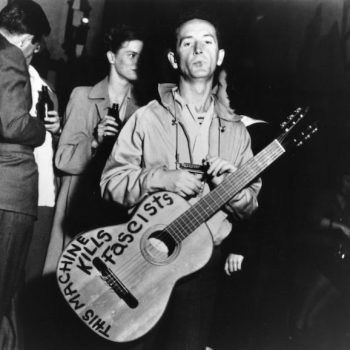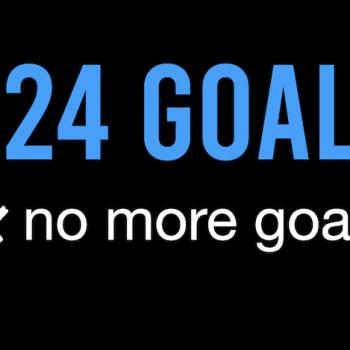There’s an interesting article in the Atlantic Monthly about why the rich are less charitable than those with more modest incomes. Over the years I’ve heard this statistic used many times and it’s usually pretty consistent. The rich – although they give more in actual dollars – give far less of a percentage of their income to social causes than the poor. The top 20% in income give around 1.3 percent of their income to social causes, while the bottom 20% in income typically contribute around 3.2 percent.
Never mind the fact that neither of these numbers are all that amazing, why would lower income households contribute more than double the percentage contributions of the wealthy?
Paul Piff, the author of the study, posits a concrete reason, and it makes a lot of sense: the wealthy who are not as generous live in such a way that they are isolated from those in need. The wealthy people who live in affluent neighborhoods in affluent zip codes without a diverse socioeconomic neighborhood are less likely to be generous. The more isolated wealthy people are from significant social contact with the poor, the less likely they are to share their wealth with those who are vulnerable.
I think this is a key insight and a reason that the church is of great importance. The church is supposed to be the place where the rich and the poor come together weekly to worship as one. We share our concerns together and the typical socioeconomic stratification melts away in this fellowship. We express our unity in Christ and this unity runs across all of the typical societal boundaries such as income level, net worth, neighborhood, and so on.
I live in Johnson County, KS. It’s one of the most affluent suburbs in the country with a median household income of nearly $75K per year. I know a ton of really generous people whose income is double the median or more, and whose giving is way over a 3.2 percent level. Piff’s research helps to explain at least part of why this is true. So many of my friends who are in the top 20% are in some kind of significant relationship with folks who are in the bottom 20% – usually a relationship that is facilitated by a church or ministry. This relational tie stokes the generosity of the wealthy & the wealthier group consistently responds with great consistency.
This makes me hopeful about my church’s approach to the poor. We don’t just write checks or go out and serve them on the street. We invite them to worship with us and build relationships together over time. I think this should inspire churches to work hard not to simply give to the poor, but to make sure that the poor are a part of the congregation of the faithful. I know that this gets messy. I know that this will not be easy or comfortable, but it’s absolutely necessary. The souls of the rich are – to some extent – dependent upon their proximity to the poor.
My only caveat to this article is this. The church’s role is not simply to give wealthy people exposure to the poor, but to cultivate a completely different narrative with regard to money and wealth for all their members. What is the purpose of wealth? What is it for? To what end should all of our resources be leveraged? Within the Christian tradition we have some phenomenal teachings and perspectives on money, possessions, and stuff. Our tradition treats these things holistically, recognizing the needs of the group often usurp the wants of the individual – that’s generosity. It’s not just about how much money we give to social causes, it’s about how we view our lives and our resources.
The Christian is not meant to view their resources with an eye toward becoming upwardly mobile. Our tradition teaches us that we are to live generously. Our chief concern is that everyone has enough to live. The Christian narrative is not a narrative of scarcity and fear. It’s a narrative of hope and abundance. We can always afford to be generous because we know that there is enough for everyone, and if we find ourselves in big trouble, our brothers and sisters will help.
Generosity isn’t a virtue, it’s a way of viewing the world in which we live and our own lives. God is generous so we can be generous.
I think those two elements together 1) Living in relationship with the bottom 20%, and 2) Having a holistic view of wealth that is deeply rooted in God’s story of abundance, make for a healthy start in terms of how we view and talk about money.
Here’s a quick excerpt from the article:
If Piff’s research suggests that exposure to need drives generous behavior, could it be that the isolation of wealthy Americans from those in need is a cause of their relative stinginess? Patrick Rooney, the associate dean at the Indiana University School of Philanthropy, told me that greater exposure to and identification with the challenges of meeting basic needs may create “higher empathy” among lower-income donors. His view is supported by a recent study by The Chronicle of Philanthropy, in which researchers analyzed giving habits across all American ZIP codes. Consistent with previous studies, they found that less affluent ZIP codes gave relatively more. Around Washington, D.C., for instance, middle- and lower-income neighborhoods, such as Suitland and Capitol Heights in Prince George’s County, Maryland, gave proportionally more than the tony neighborhoods of Bethesda, Maryland, and McLean, Virginia. But the researchers also found something else: differences in behavior among wealthy households, depending on the type of neighborhood they lived in. Wealthy people who lived in homogeneously affluent areas—areas where more than 40 percent of households earned at least $200,000 a year—were less generous than comparably wealthy people who lived in more socioeconomically diverse surroundings. It seems that insulation from people in need may dampen the charitable impulse.
Wealth affects not only how much money is given but to whom it is given. The poor tend to give to religious organizations and social-service charities, while the wealthy prefer to support colleges and universities, arts organizations, and museums. Of the 50 largest individual gifts to public charities in 2012, 34 went to educational institutions, the vast majority of them colleges and universities, like Harvard, Columbia, and Berkeley, that cater to the nation’s and the world’s elite. Museums and arts organizations such as the Metropolitan Museum of Art received nine of these major gifts, with the remaining donations spread among medical facilities and fashionable charities like the Central Park Conservancy. Not a single one of them went to a social-service organization or to a charity that principally serves the poor and the dispossessed. More gifts in this group went to elite prep schools (one, to the Hackley School in Tarrytown, New York) than to any of our nation’s largest social-service organizations, including United Way, the Salvation Army, and Feeding America (which got, among them, zero).
Underlying our charity system—and our tax code—is the premise that individuals will make better decisions regarding social investments than will our representative government. Other developed countries have a very different arrangement, with significantly higher individual tax rates and stronger social safety nets, and significantly lower charitable-contribution rates. We have always made a virtue of individual philanthropy, and Americans tend to see our large, independent charitable sector as crucial to our country’s public spirit. There is much to admire in our approach to charity, such as the social capital that is built by individual participation and volunteerism. But our charity system is also fundamentally regressive, and works in favor of the institutions of the elite. The pity is, most people still likely believe that, as Michael Bloomberg once said, “there’s a connection between being generous and being successful.” There is a connection, but probably not the one we have supposed.
















